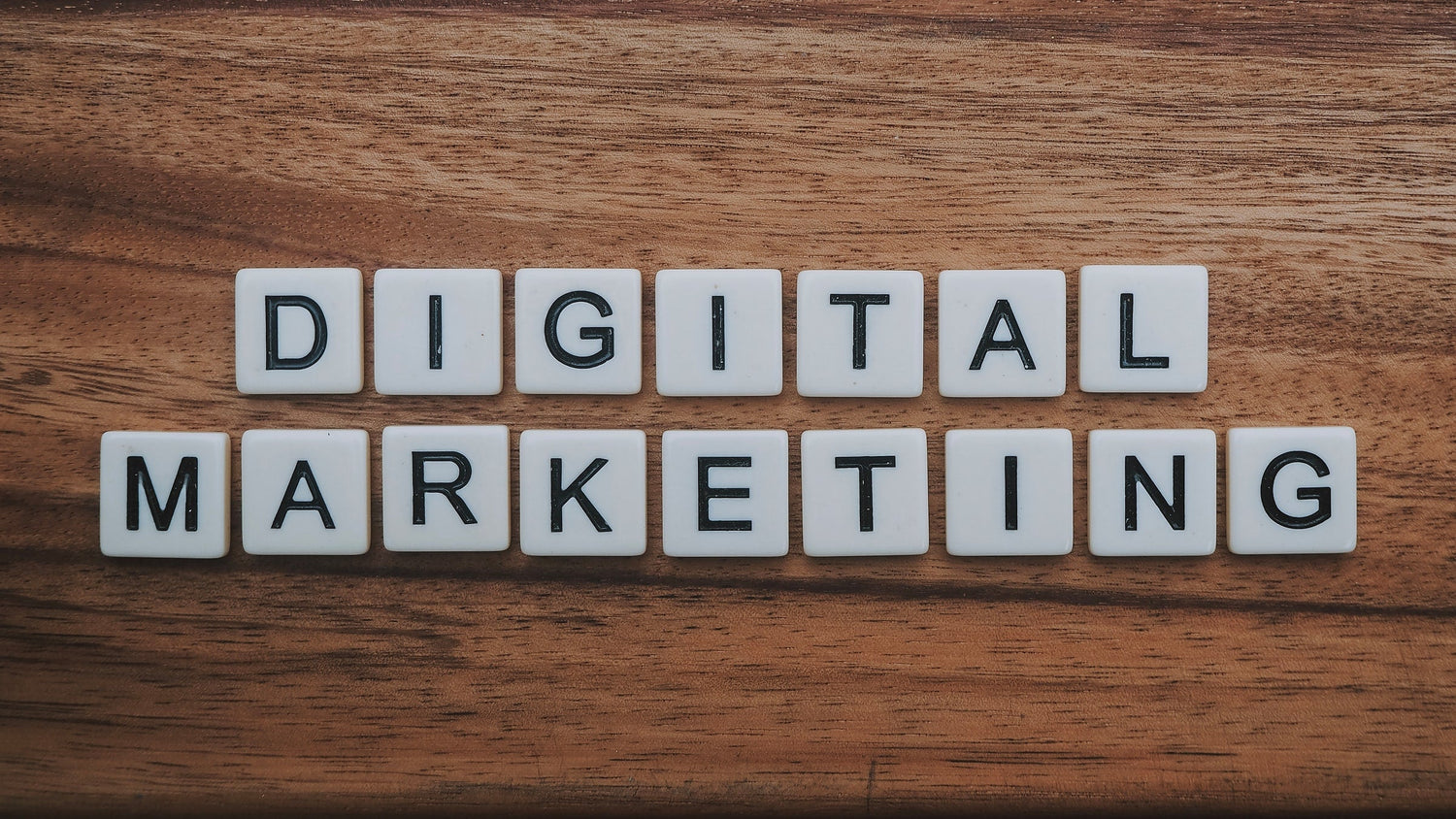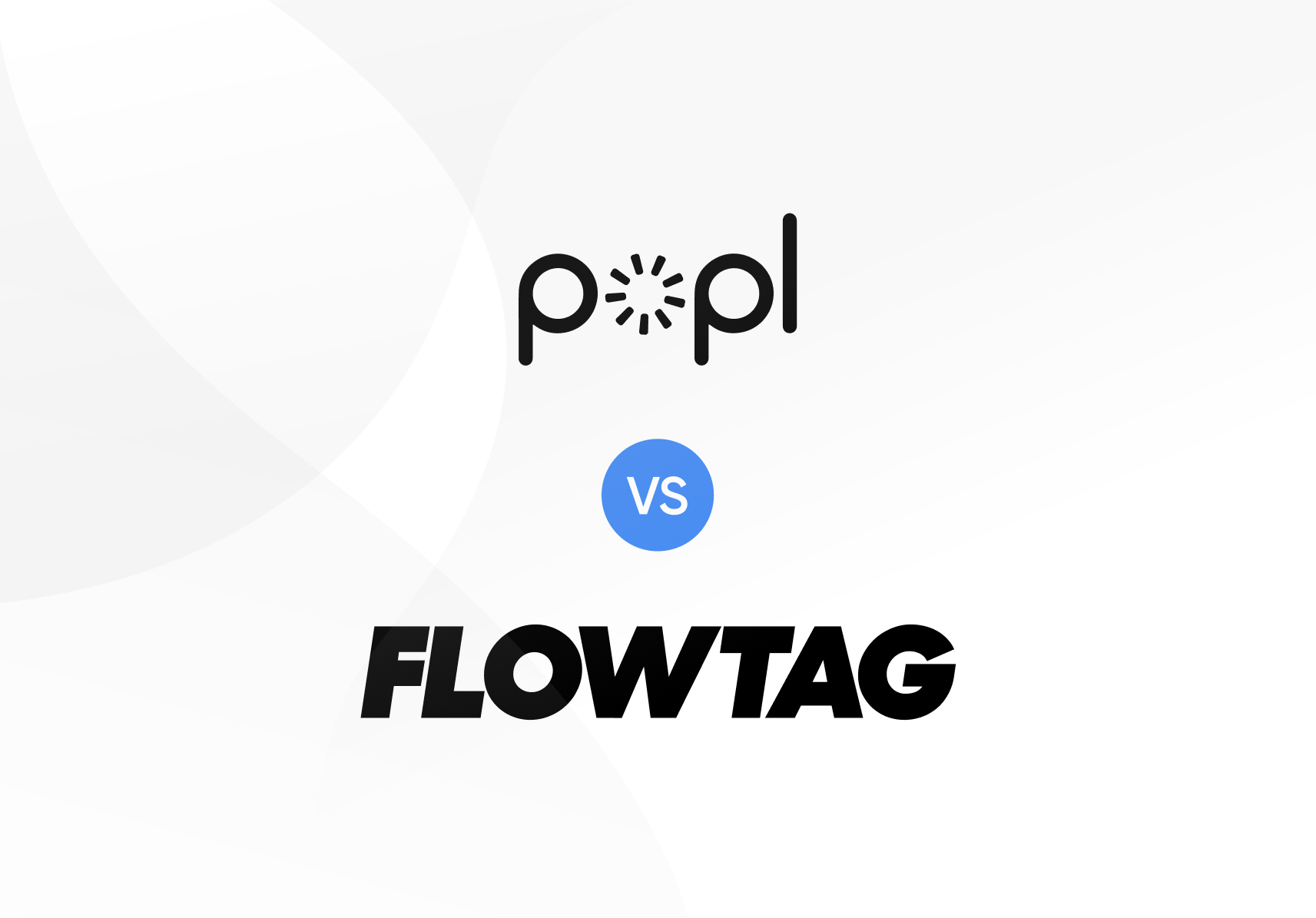Digital marketing is a way for businesses to make more money online. There are several types of digital marketing, including earned, owned, and paid.
In the past, marketing and advertising were two sharply divided processes - and sales was something else entirely. But today, the term “marketing” is becoming more-and-more encompassing. Today, covering everything from the research that goes into finding potential customers, to the messaging used to entice them, to, finally, the methods used to get them to buy.
Digital Marketing Channels
The most straightforward way to organize and understand digital marketing is by breaking it into three distinct categories. Earned Media, Owned Media, and Paid Media.
The tactics of Earned, Owned, and Paid marketing channels are different. But the goals are basically the same: Make brands and businesses more money.

Earned Marketing Channels
The first category of digital marketing is earned media. Earned media is what it sounds like. Earned media equals marketing that is “earned” through the actions of customers or other third-parties. In the physical world, the two most common types of earned media are word-of-mouth and referrals. Digitally, Earned Media includes features in the press, as well social media and more. Basically, anything promoting your brand without compensation.
When it comes to important types of digital marketing, public relations is among the top. PR is about getting your business press, what you’re really looking to do is secure what are called “earned placements.” These are opportunities to have your business featured in a publication that will, ideally, reach your target market.
The reason this is so valuable is because it not only helps increase the visibility of your brand, but also helps improve what’s called your search engine optimization (SEO). This is the process of making your website more visible in search engine results pages (SERPs), like Google. The logic is that if a website is featuring your business, then you must be pretty important - and that means people searching for keywords related to what you do are more likely to find you.
In other words, getting earned placements is a great way to improve your SEO without having to spend money advertising.
Owned Marketing Channels
The second digital marketing category, Owned Media, is made up of marketing channels that businesses “own” outright. This can include their website, their blog, their email list, and any other digital properties they control. The goal of Owned Media is to use these channels to build relationships with potential and current customers - and, ultimately, to get them to buy what you’re selling.
One of the most important aspects of Owned Media is what’s called “content marketing.” This is the process of creating and distributing valuable, relevant, and consistent content with the goal of attracting and retaining a clearly-defined audience.
The logic behind content marketing is that, if you can provide potential customers with valuable information, they will be more likely to buy what you’re selling. And, even if they don’t buy right away, they will remember your brand the next time they need what you’re offering. Creating high-quality, useful content is an increasingly important part of effective digital marketing. These days it's not just about pure "ads." Customers and potential customers do not want sales stuffed in their face. Instead, they want interesting and engaging information. In some cases, customers may just want to be entertained. It's online brand's responsibility to give their customers what they are searching for - whether that be their specific product, or information related to their product.
Owned Marketing Example
For instance, a health and wellness brand should create content around the benefits and uses of their products. If you are selling a vitamin C supplement, you should have multiple articles on your blog around everything to do with vitamin C. The reason this is important is related to "search intent." Customers searching for topics related to vitamin C may be in the market to buy. This won't be true in every case, but you can bet that at least some of those who are searching things like "how much vitamin C should I take?" have at least some potential to buy. The more likely someone is to buy, the higher their "intent." And the goal is to as closely align the content your online brand is creating with the terms or keywords your customers are searching for.
Owned Marketing: Social Media
Social media is another owned marketing channel. The difference between social media and content marketing is that, with social media, you are often not creating the content yourself - you are simply sharing it. The goal of social media is similar to that of content marketing: to build relationships with potential and current customers.

The main difference is that social media is a two way street. This means you can and should be interacting with customers or clients. Now, this isn't to say that businesses and brands can't or shouldn't create their own social media content. Certainly, they should. But also make moves to encourage your social media followers to create content for you. That's the best of both worlds! Think of social media as online networking! I will help you maintain the right approach.
And when it comes to effective networking, it's not all about quantity - it's also about the quality of your connections. Focus on finding the right people online and giving those people content that they can engage with and enjoy. A smaller, highly-engaged audience is much more valuable to brands then a larger, indifferent one. Read more networking tips here.
Here are some ways brands can leverage their social media following:
- Use social media to run contests and giveaways.
- Use social media to promote user-generated content.
- Use social media to crowdsource ideas.
Paid Marketing Channels
Paid media is an incredibly valuable digital marketing type exactly what it sounds like: Marketing or advertising that involves businesses paying to be seen by customers. Online, the most common forms of paid marketing are what are called “PPC” and “Display advertising.”
PPC stands for “pay-per-click.” With PPC ads, businesses essentially rent space from online platforms like Google, Facebook, and Instagram. They bid on keywords related to their product or service, and then pay a small fee every time one of their ads is clicked.
The logic behind PPC is that it allows businesses to specifically target customers who are interested in what they have to offer. And, because you only pay when your ad is clicked, it can be a very cost-effective form of marketing - if done correctly.
Display Advertising
Display advertising is what you see when you visit a website and there are banner ads. These are usually images or videos created by businesses to promote their product or service.
The logic behind display advertising is similar to that of PPC. Basically, businesses reach people who are interested in what they're selling. And, because you can target your ads to specific demographics, interests, and even websites, it can be a very effective form of marketing.
There are a few things to keep in mind with paid marketing, though. The first is that, because you are paying to be seen, it can be easy to spend a lot of money very quickly. The second is that, because you are essentially renting space from online platforms, your ability to reach customers can disappear overnight if you stop paying. Finally, paid marketing only works if you have a product or service that people actually want to buy. Otherwise, you're just throwing money away.
Digital Marketing - Key Performance Indicators (KPIs)
There are many types of digital marketing. Digital marketing, in other words, can be a lot of things, but one thing it always is, is measurable. That’s because, unlike traditional marketing channels like print or television, online businesses can track exactly what customers do when they see their ads or visit their website.
This data can then be used to improve the effectiveness of future marketing campaigns. But, in order for data to be useful, it needs to be organized in a way that makes sense. That’s where KPIs come in.
Key performance indicators (KPIs) are metrics that businesses use to track and measure the success of their marketing campaigns. There are a lot of different KPIs that businesses can track, but some of the most common include:
- Website traffic
- Conversion rate
- Bounce rate
- Time on site
- Pages per visit
- Organic search traffic
Each KPI is going to be different for every business, because what counts as a “good” number is going to be different for every business. For example, a business with a very high conversion rate might not be as concerned with website traffic, because they know that the people who are visiting their site are more likely to buy what they’re selling.
Low Conversions
However, a business with a low conversion rate is going to want to focus on increasing website traffic, because they need more people to see their product or service in order to make more sales. The important thing is to track the KPIs that are most important for your business and then use the data you collect to improve your marketing campaigns.
Digital marketing is a very effective way for businesses to reach new customers and grow their business. But, like any form of marketing, it’s important to understand what you’re doing and to have a plan for how you’re going to measure success. By understanding what digital marketing is and how to track your KPIs, you’ll be well on your way to growing your business online.
Should Brands Do Digital Marketing?
Digital marketing types should brands focus on? And, in general, can marketing online help customers and grow their business? In short, it depends and, well, yes. Regarless of your ideal digital marketing type, certainly your brand should be doing some type of online marketing. But, like any form of marketing, it’s important to understand what you’re doing and to have a plan for how you’re going to measure success.
If you don’t have a plan or if you don’t understand what you’re doing, then digital marketing can be a waste of time and money. But, if you take the time to learn about digital marketing and to create a plan for how you’re going to use it, then it can be a great way to grow your business.
So, should brands do digital marketing? The answer is yes, but only if they are willing to put in the time and effort to learn about it and to create a plan for how they’re going to use it. Otherwise, they might as well not bother.
Best Digital Marketing Tactics
The best digital marketing type depends largely on the stage of your company or venture. For example, a startup is going to have different needs than an established company.

A startup is going to need to focus on generating awareness and getting people to try their product or service. An established company is going to need to focus on growing their customer base and increasing sales.
So, what are some of the best digital marketing tactics for each stage?
- For startups: content marketing, social media marketing, and search engine optimization.
- For established companies: email marketing, retargeting ads, and using data to improve your marketing campaigns.
The important thing is to focus on the tactics that are going to be most effective for your business. You don’t need to use all of the tactics, but you should focus on the ones that are going to have the biggest impact.
Digital marketing is a very effective way for businesses to reach new customers and grow their business. But, like any form of marketing, it’s important to understand what you’re doing and to have a plan for how you’re going to measure success. By understanding what digital marketing is and how to track your KPIs, you’ll be well on your way to growing your business online.
How Much Should You Spend on Digital Marketing?
This is a difficult question to answer, because there is no one-size-fits-all answer. The amount you should spend on digital marketing depends on a number of factors, such as your budget, your goals, and the size of your target market.
If you’re a small business with a limited budget, then you might want to focus on just one or two digital marketing channels. If you’re a larger company with a bigger budget, then you can afford to focus on more channels.
The important thing is to focus your spending on the channels that are most effective for your business. There’s no point in spending a lot of money on a channel that isn’t going to generate any results.
Understanding Social Media Marketing
Social media marketing is the use of social media platforms to connect with customers and promote products or services. Businesses can use social media to share news and updates, run contests and promotions, and engage in conversations with customers.
A digital marketing strategy is a plan for using digital marketing channels to achieve specific marketing goals. The strategy should take into account the target audience, the budget, and the goals of the business.
Mobile marketing is the use of mobile devices to reach and engage with customers. Businesses can use mobile marketing to send push notifications, run mobile ads, and create mobile-friendly websites and apps.
These are just a few of the many types of digital marketing. The best way to choose which channels to use is to create a digital marketing strategy that takes into account the specific needs of your business.
Here are some additional tips for creating a successful digital marketing strategy:
- Set clear goals. What do you want to achieve with your digital marketing efforts? Do you want to increase brand awareness, generate leads, or drive sales? Once you know your goals, you can start to develop a strategy to achieve them.
- Define your target audience. Who are you trying to reach with your digital marketing efforts? Once you know your target audience, you can tailor your content and messaging to appeal to them.
- Create high-quality content. The content you create is one of the most important aspects of your digital marketing strategy. Make sure it is high-quality, informative, and engaging.
- Use social media effectively. Social media is a powerful tool for reaching and engaging with customers. Make sure you are using it effectively to promote your products or services and connect with your target audience.
- Track your results. It is important to track the results of your digital marketing efforts so you can see what is working and what is not. This will help you make adjustments to your strategy as needed.
Digital marketing strategies
A digital marketing strategy is a plan for using digital marketing channels to achieve specific marketing goals. The strategy should take into account the target audience, the budget, and the goals of the business.
Influencer marketing
Influencer marketing is a type of marketing that uses influencers to promote products or services to their followers. Influencers are people who have a large following on social media or other platforms. When they promote a product or service, their followers are more likely to be interested in it.
Types of digital marketing
There are many different types of digital marketing. Some of the most common types include:
- Search engine optimization (SEO): SEO is the process of improving a website's ranking in search engine results pages (SERPs).
- Pay-per-click (PPC) advertising: PPC advertising is a type of online advertising where businesses pay each time someone clicks on their ad.
- Social media marketing: Social media marketing is the use of social media platforms to connect with customers and promote products or services.
- Email marketing: Email marketing is the process of sending promotional emails to a list of subscribers. Marketers use an email verifier to check whether email addresses added to the list are correct - it helps keep the mailing list clean.
- Mobile marketing: Mobile marketing is the use of mobile devices to reach and engage with customers.
Content marketing strategy
A content marketing strategy is a plan for creating and distributing content that will attract and engage customers. The strategy should take into account the target audience, the budget, and the goals of the business.
Digital channels
Digital channels are the platforms that businesses use to reach and engage with customers. Some of the most common digital channels include:
- Search engines
- Social media
- Mobile devices
By using a variety of digital channels, businesses can reach a wider audience and engage with customers in more ways.
Here are some additional tips for creating a successful digital marketing strategy:
- Set clear goals. What do you want to achieve with your digital marketing efforts? Do you want to increase brand awareness, generate leads, or drive sales? Once you know your goals, you can start to develop a strategy to achieve them.
- Define your target audience. Who are you trying to reach with your digital marketing efforts? Once you know your target audience, you can tailor your content and messaging to appeal to them.
- Create high-quality content. The content you create is one of the most important aspects of your digital marketing strategy. Make sure it is high-quality, informative, and engaging.
- Use social media effectively. Social media is a powerful tool for reaching and engaging with customers. Make sure you are using it effectively to promote your products or services and connect with your target audience.
- Track your results. It is important to track the results of your digital marketing efforts so you can see what is working and what is not. This will help you make adjustments to your strategy as needed.
Most Effective Types of Digital Marketing
An effective digital marketing strategy is one that is tailored to the specific needs of a business. It should take into account the target audience, the budget, and the goals of the business.
Digital marketing can be used to increase brand awareness by creating and distributing content that is relevant to the target audience. This content can be shared on social media, published on a website, or used in paid advertising campaigns.

Social media channels are a powerful tool for reaching and engaging with customers. Businesses can use social media to share news and updates, run contests and promotions, and engage in conversations with customers.
High-quality content is essential for any digital marketing strategy. Content should be informative, engaging, and relevant to the target audience.
Businesses can improve their visibility in search results by optimizing their website for relevant keywords. This can be done by creating high-quality content that is relevant to the target audience and by using effective SEO techniques.
Paid search advertising is a type of online advertising where businesses pay each time someone clicks on their ad. This can be a very effective way to reach a targeted audience and drive traffic to a website.
By using a variety of digital marketing channels, businesses can reach a wider audience and engage with customers in more ways. This can help businesses achieve their marketing goals more effectively.
Here are some additional tips for creating a successful digital marketing strategy:
- Set clear goals. What do you want to achieve with your digital marketing efforts? Do you want to increase brand awareness, generate leads, or drive sales? Once you know your goals, you can start to develop a strategy to achieve them.
- Define your target audience. Who are you trying to reach with your digital marketing efforts? Once you know your target audience, you can tailor your content and messaging to appeal to them.
- Create high-quality content. The content you create is one of the most important aspects of your digital marketing strategy. Make sure it is high-quality, informative, and engaging.
- Use social media effectively. Social media is a powerful tool for reaching and engaging with customers. Make sure you are using it effectively to promote your products or services and connect with your target audience.
- Track your results. It is important to track the results of your digital marketing efforts so you can see what is working and what is not. This will help you make adjustments to your strategy as needed.
By following these tips, you can create a successful digital marketing strategy that helps you achieve your business goals.
Here are some examples of how businesses can use digital marketing to achieve their goals:
- Increase brand awareness: A business can increase brand awareness by creating and sharing high-quality content on social media. This content can be about the business's products or services, or it can be about industry news or trends.
- Generate leads: A business can generate leads by using paid search advertising to target potential customers who are searching for products or services like theirs. When someone clicks on the business's ad, they will be taken to a landing page where they can learn more about the business and its products or services.
- Sales teams involved in in-person sales or networking should consider Popl Teams as a way to stay organized and close more deals.
- Drive sales: A business can drive sales by using email marketing to send promotional offers to its subscribers. Email marketing is a very effective way to reach a targeted audience and promote products or services.
The Future of Digital Marketing
Digital marketing is always changing. New technologies and social media platforms are constantly being developed, and new ways of reaching customers are always emerging.
So, what does the future of digital marketing look like?
The future of digital marketing looks very exciting. We can expect to see more use of artificial intelligence, virtual reality, and personalization.
We can also expect to see more use of data to improve marketing campaigns. This helps create more personalized experiences for customers.
So, keep up with the latest marketing trends if you want continued success Only by doing this will you be able to continue to grow your business online.
Check out some of Popl's great digital business cards here.
FAQ | Frequently Asked Questions
Q1: What are the different types of digital marketing?
- Search engine optimization (SEO): This is the process of improving a website's ranking in search engine results pages (SERPs).
- Pay-per-click (PPC) advertising: This is a type of online advertising where businesses pay each time someone clicks on their ad.
- Social media marketing: This is the use of social media platforms like Facebook, Twitter, and Instagram to reach and engage with potential customers.
- Content marketing: This is the creation and distribution of valuable, relevant content to attract and retain a target audience.
- Email marketing: This is the use of email to send promotional messages to potential and existing customers.
- Mobile marketing: This is the use of mobile devices like smartphones and tablets to reach and engage with potential customers.
- Affiliate marketing: This is a type of marketing where businesses pay a commission to other businesses or individuals for each sale that is generated.
Q2: What are the benefits of digital marketing?
Digital marketing has many benefits, including:
- Reach: Digital marketing can help businesses reach a wider audience than traditional marketing methods.
- Targeted: Digital marketing can be targeted to specific demographics, interests, and behaviors.
- Measurable: Digital marketing results can be easily measured, which helps businesses track their progress and make necessary adjustments.
- Cost-effective: Digital marketing can be a cost-effective way to reach a large audience.
Q3: What are the challenges of digital marketing?
Some of the challenges of digital marketing include:
- Competition: There is a lot of competition in the digital marketing space, which can make it difficult to stand out.
- Constant change: The digital landscape is constantly changing, which can make it difficult to keep up with the latest trends.
- Measuring results: It can be difficult to measure the effectiveness of digital marketing campaigns, especially if they are not properly tracked.
Q4: How much does digital marketing cost?
The cost of digital marketing can vary depending on the services that are used. However, digital marketing can be a cost-effective way to reach a large audience.
Q5: How do I measure the success of a digital marketing campaign?
There are many different ways to measure the success of a digital marketing campaign. Some of the most common metrics include:
- Website traffic: This metric measures the number of visitors to a website.
- Conversion rate: This metric measures the percentage of visitors to a website who take a desired action, such as making a purchase.
- Return on investment (ROI): This metric measures the amount of money that is generated from a digital marketing campaign compared to the amount of money that is spent on the campaign.
---
More from Popl
How to Close More Deals | Tactics for Sales Professionals
The Art of Negotiation: Securing Your Worth and Advancing Your Career
How Managers and Executives Can Lead By Example















